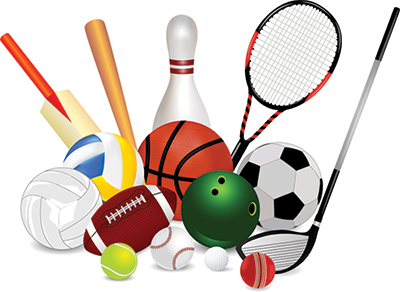Author: Dr. J. Pieter Hommen

The Controversy – Is the Single-Sport Athlete Better than the Multi-Sport Athlete?
As an orthopedic surgeon specializing in sports medicine, I am frequently asked by concerned parents about whether their child should play a single sport year-round. Here in South Florida, we are blessed with weather that allows for nearly year-round outdoor sports activities. More and more kids are dedicating themselves to playing a single sport at younger ages, often flowing back and forth between school-sponsored teams and travel club teams. There many pressures to specialize younger athletes in year-round participation. Club teams have expenses such as facilities and coaches that require year-round athlete commitment and often preclude participation in other sports. Parents can also place pressure on children with the hopes of achieving the often-cited Malcolm Gladwell’s rule that is takes 10 years or 10,000 hours of specialization to become the best at something. This leaves many parents confused and wondering if there is any scientific research that can shed some light on this controversial issue.
Medical Evidence for the Single-Sport Athlete?
The American Orthopedic Society for Sports Medicine (AOSSM) defines specialization in youth sports as an athlete who is engaged in a single sport for at least three seasons per year. There is general medical consensus that early specialization is most beneficial in sports where age starts to chip away earlier at peak performance. The mean peak age for swimmers is 21, whereas baseball players tend to hit their peak between 27 and 30. Women tend to hit peak performance at an even younger age than males in sports like gymnastics and swimming. Therefore, success would demand earlier specialization. The AOSSM has recognized that athletes participating in tennis, fencing, figure skating, diving, gymnastics, swimming and dance would benefit from earlier specialization. For those sports where peak performance is reached after maturity, the choice of whether to specialize or continue at a recreational level should be delayed until children reach 13 years of age. By late adolescence (age 16), athletes have developed the physical, cognitive, social, emotional, and motor skills to invest in the highly specialized training required in one sport.
Medical Evidence for the Multi-Sport Athlete?
Scientific research according to Developmental Model of Sports Participation (DMSP) by Côté has shown the following to be true for the young athlete:
- Athletes engaged in multiple sports where peak performance in a single sport is reached after skeletal maturation (usually age 12-14 for girls and 14-17 for boys) have equal elite athletic participation in sports compared to those who specialize earlier.
- Athletes involved in early diversified sports tend to have longer sports careers and tend to continue to participate in athletics into adulthood than those who specialize at an early age.
- Early diversification allows for more positive youth development.
- High amounts of unstructured play leads to more enjoyable participation in sports and less burnout.
- High amount of unstructured play promotes better motor and cognitive skills that will enhance their principle sport of interest later.
- Around the end of primary school (age 13), children should have opportunity to choose to specialize in their favorite sport or continue at a recreational level.
More Interesting Statistics and Facts to Consider:
- NFL drafts over the past 5 years - nearly 90% of first round draft picks were multi-sport athletes in high school. Link to Article
- Early specialization for boys carries a higher risk of injury in baseball, cheerleading and gymnastics. Link to Article
- Early specialization for girls carries a higher risk of injury in running, swimming, soccer, volleyball, cheerleading and gymnastics. Link to Article
- Mininder S. Kocher, a pediatric orthopedic surgeon at Children’s Hospital Boston, reported that children who grow up in the northern United States have a higher chance of becoming a major league baseball player than kids from the South because they cannot play their sport year-round and therefore are less likely to be injured. Link to Article
Recommendations to Parents for Athletes Involved in Early Sports Specialization:
Children involved in early specialization, or who participate in more hours of sports per week than their age, should be monitored closely for signs of burnout, overuse injuries, or potential decrements in performance from overtraining. Furthermore, their training should incorporate an integrative neuromuscular training program that focuses on periodic strength and conditioning training to develop diverse motor skills.














